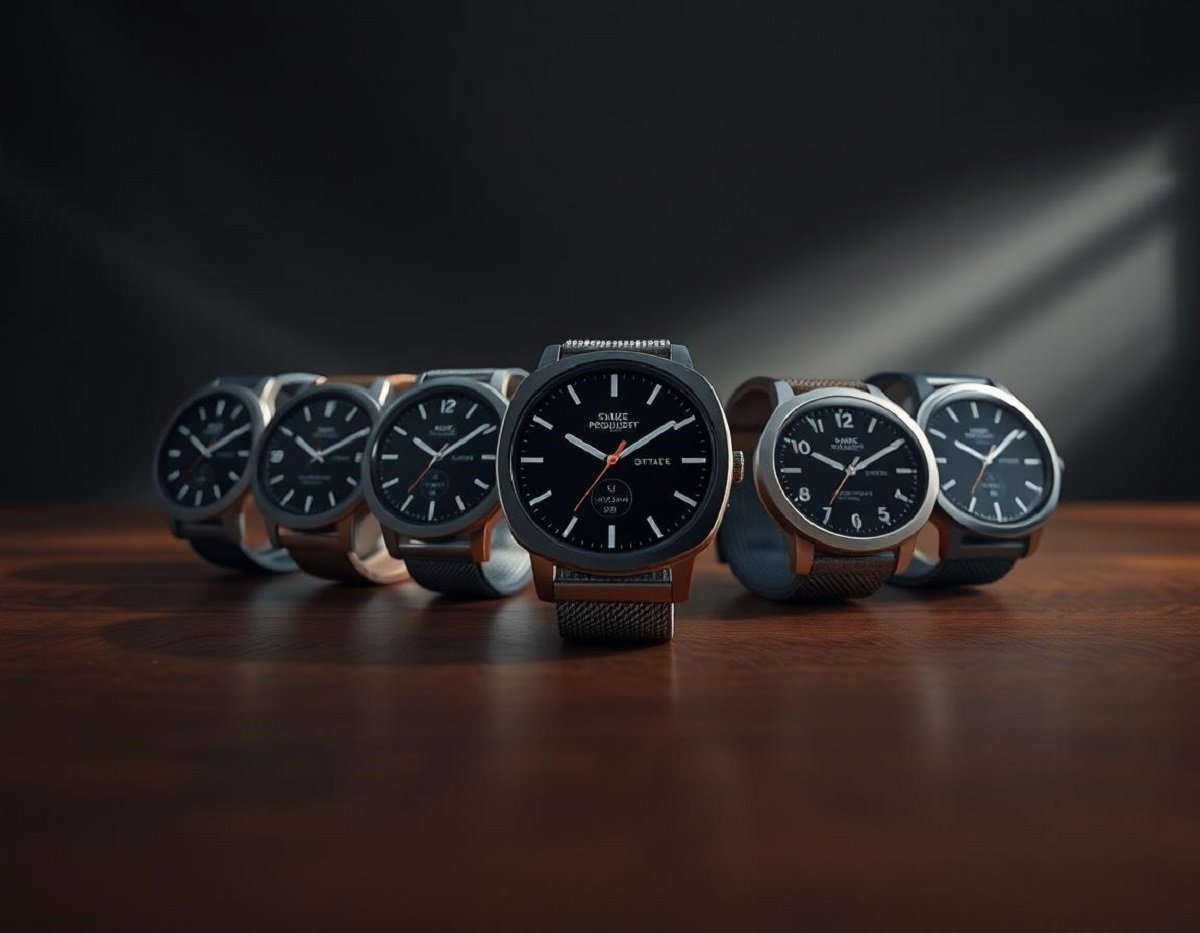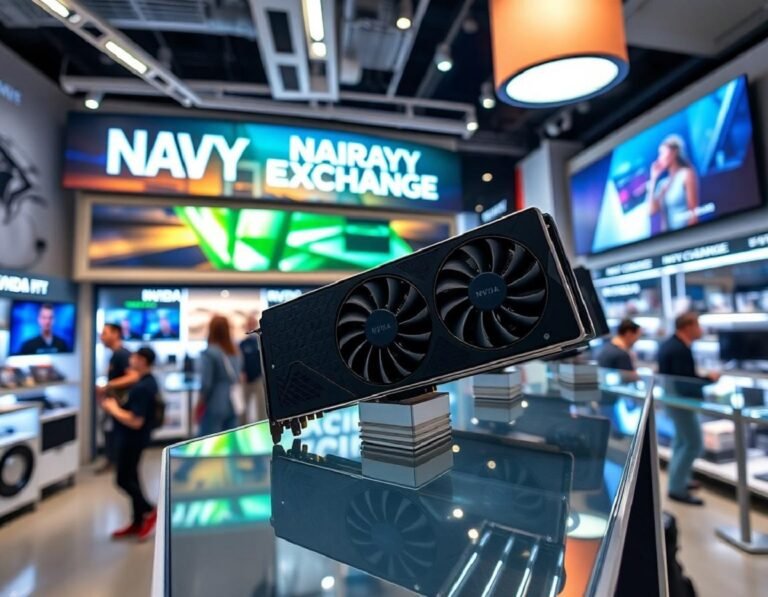Pebble’s New Watches Will Keep The Old Name With Fresh Features
Pebble’s Classic Name Returns: New Watches, Old Spirit, Fresh Features [2025 Update]
Pebble is back, and it feels like a reunion fans have waited years for. What started as a humble Kickstarter story in 2012 now returns, with a fresh spark but the same name that kicked off the smartwatch craze. There’s a familiar sense of excitement—for anyone who ever missed those quick-glance notifications or enjoyed swapping fun watchfaces.
The new watches promise to keep everything people loved about Pebble: the quirky style, weeks-long battery life, and timeless simplicity. At the same time, Pebble leans into the future—open-source software, bright new screens, and just enough modern touches to draw in a new crowd. Old fans find nostalgia, newcomers discover what made Pebble special, and everyone gets a taste of something bold yet rooted.
Pebble’s comeback isn’t just another release. It’s a bridge between old and new, made possible by the passion of a loyal community. If you remember your first Pebble buzz on your wrist, or if you’re just curious what all the fuss was about, there’s something here for you.
How Pebble Got Its Name Back
Reviving the Pebble name is about more than bringing back a logo or picking up where things left off. It’s about restoring the energy, the inside jokes, and the sense of belonging that the brand created over years of wild growth, tough losses, and unwavering fans. For everyone who saw Pebble vanish and quietly rooted for a return, this moment matters. Pebble’s comeback speaks to the strength of a community that never let go—and a brand that always felt more like a friend than a company.
 Photo by Ivan Samkov
Photo by Ivan Samkov
The Story of Pebble’s Name
Pebble’s story is straight out of classic startup folklore. Founded by Eric Migicovsky and friends in 2008, Pebble was one of the first to take smartwatches seriously. With its simple look, long battery life, and thousands of creative watchfaces, the brand grew from a viral Kickstarter project into a smartwatch pioneer. Millions wore a Pebble because it just made life easier, and because having a Pebble felt personal in ways that today’s tech rarely does.
As excitement peaked, so did the competition. Big players entered the market, Pebble ran into financial trouble, and the brand faded after its acquisition. Yet, behind the scenes, dedicated fans held the torch—fixing bugs, updating software, and refusing to let the spirit of Pebble fade out. That unbroken spirit was the reason getting the name back actually mattered when the opportunity returned.
Reclaiming Pebble: More Than Business
Regaining the Pebble trademark wasn’t just a legal move; it was the moment the community’s patience paid off. Eric Migicovsky, still cheering from the sidelines all these years, finally got to say what so many wanted to hear: Pebble will still be Pebble. According to a recent report from The Verge, the name is now officially back with the team, ready for a true reboot of the originals—with all the history and promise the word carries.
If you’re curious about the inside story, it reads like a love letter between a brand and its fans. The very idea of seeing Pebble on wrists again is enough to make old supporters share stories and beginners ask what made it so beloved in the first place. The details, including how Migicovsky’s vision never really went away, are highlighted in articles like this recap of Pebble’s rise and return.
A Legacy the Tech World Remembers
Pebble’s rebirth feels rare in technology, a field that usually forgets its roots. The brand’s fan culture, filled with custom faces, DIY fixes, and small joys, built a sense of identity. People followed Pebble through every win and loss because it was their own story, too. Now, Pebble’s return isn’t just about new hardware; it’s a shared victory, a wink to the past and an open invitation to a new chapter.
For deeper context about Pebble’s cultural impact, take a look at this timeline of Pebble and its passionate following on its Wikipedia page.
Pebble is more than a watch. It’s proof that a great idea—with a great name—can outlast the chaos and come back stronger, powered by the people who kept it alive.
Meet the New Pebble Watches: 2 Duo and Time 2*
Pebble’s next chapter opens with two watches that build on legacy, while confidently stepping into the future. The Pebble 2 Duo leans into clarity and lasting power, while the Pebble Time 2* adds color and smart upgrades. Both prove you don’t have to pick sides between nostalgia and progress—everything that made Pebble special, plus plenty of new reasons to get excited.
Pebble 2 Duo: E-Paper Power and Personality
 Photo by MART PRODUCTION
Photo by MART PRODUCTION
Pebble 2 Duo keeps things simple but striking. Its 1.2-inch black-and-white e-paper screen is easy on the eyes, even in direct sunlight, with crisp lines and a calming, minimalist vibe. The polycarbonate case (available in black or white) makes for a featherlight feel on your wrist—an everyday companion rather than a statement piece.
- Battery life holds strong for weeks, not days—thanks to the ultra-efficient e-paper display and a beefier battery.
- Hardware upgrades include a built-in barometer, compass, and a suite of sensors for better tracking and notifications.
- Minimalist design stands out for being playful and unpretentious, striking a balance between modern comfort and classic charm.
Shipping starts in July, giving Pebble fans a watch that works whether you’re hiking, biking, or just heading to work. For a full breakdown, check out Eric Migicovsky’s PebbleOS announcement.
Pebble Time 2*: Touch of Color and Modern Perks
The Pebble Time 2* brings you the familiar ease of e-paper, now in vivid color. Its 1.5-inch, 64-color e-paper display brings watchfaces and notifications to life with warmth and style, while staying readable in all conditions.
- Color screen: Get bold watchfaces and lively notifications without sacrificing the always-on display Pebble fans expect.
- Touchscreen: Swipes and taps join tactile buttons for smoother navigation.
- Premium build: A polished metal frame (in black, white, or a soon-to-be-announced third shade) and finely crafted buttons make this feel more like a classic analog timepiece than ever.
- Heart rate sensor: Added fitness features let you track your health with a quick glance, no extra gear needed.
It’s a Pebble, but with that extra polish and modern feel some users have wanted. The Time 2* also continues Pebble’s tradition of running thousands of classic apps and custom faces. Dive into the full specs and color options in the launch post.
What’s New, What’s Classic
Pebble’s reboot doesn’t mess with the formula that worked—and that’s by design. Here’s how the new watches match up with the classics:
- Battery life: Still a standout, both models offer up to 30 days per charge thanks to upgraded batteries and smarter chips, as reported in this CNET overview of new Pebble battery life.
- Physical buttons: Both watches keep the classic side buttons for reliable, eyes-free control.
- Hackability: Open-source software continues to welcome tinkerers, hobbyists, and fans looking to build their own features—just like the best days of Pebble.
- Design language: The looks remain friendly and unfussy, with shapes and proportions that feel familiar to anyone who has worn a Pebble before.
Fresh features like the color touchscreen on the Time 2*, new health sensors, and an even bigger library of supported apps show that Pebble isn’t just replaying old hits. The key threads—simplicity, reliability, and the joy of tweaking—carry forward with some modern extras.
For a full side-by-side on Pebble’s evolution, check out this community-made comparison chart of Pebble models. You’ll see what’s changed, what’s stayed true, and why Pebble in 2025 still feels like Pebble.
Open-Source Heart: PebbleOS and Community
Pebble wasn’t just a product—its secret sauce has always been the people behind it and around it. The tech world is full of closed doors, but Pebble’s new chapter means swinging those doors wide for everyone. As PebbleOS goes fully open source, it brings a wind of change that lets fans, coders, and curious users all lend a hand. The days of waiting on big company updates are over. You get to shape what makes your watch tick.
 Photo by RealToughCandy.com
Photo by RealToughCandy.com
PebbleOS Goes Open Source
The PebbleOS code isn’t just tucked away or held by a few engineers—now, it’s public for anyone inspired to try something new. Opening the code gives Pebble fresh energy and keeps the spirit of tinkering alive. You can see how it all works under the hood or even help fix bugs, add features, and shape the future of smartwatches.
Some key reasons why this matters:
- Transparent updates: No more guessing about why things change—everything’s out in the open.
- Longevity: Open source keeps Pebble watches running far longer, dodging the end-of-life fate of most gadgets.
- Creativity: Developers now have the tools to try wild ideas, big and small.
To get involved or see the breakthroughs happening daily, read this blog about seeing the code that powered the Pebble smartwatches.
The Power of Community: Where Users Drive the Future
Pebble’s open door policy doesn’t just help coders. The new approach makes space for casual fans, teachers, tinkerers, and anyone with an idea or need. Want to customize your watchface? Build a sleep tracker? Join a weekend hackathon? You’re not alone—Pebble’s user base is part support group, part brain trust.
Here’s what everyday fans gain:
- More updates: Features that users actually want, not just what’s on a quarterly roadmap.
- Support: Fast help from others who have tackled the same bugs or upgrades.
- Access: Guides and tools make it easy for all skill levels to join in.
There’s plenty of chatter already about what open PebbleOS means for new customizations and features. The Pebble subreddit is buzzing with ideas on custom firmwares and user projects, opening the door to even more user-driven upgrades.
The Movement Behind Rebble
After Pebble closed its doors, many thought the community would fade away. Instead, a group called Rebble kept Pebble alive, offering cloud services, app stores, and software fixes when no company would. For years, Rebble was the safety net for every fan who wasn’t ready to give up their favorite watch.
Thanks to Rebble:
- Pebble watches stayed useful even after official support vanished.
- New apps, watchfaces, and features kept rolling out.
- A stronger-than-ever fanbase formed, teaching newcomers and supporting old-timers.
Learn more about Rebble’s mission and the way it has carried Pebble from the past into today at Rebble’s website and their update reflecting the future of Rebble.
What This Means for Developers and Everyday Users
Developers have a playground to test bold ideas, from fitness tracking mods to all-new apps. The barrier isn’t budget or approvals; it’s only how much time and creativity you bring. Resources for new contributors are friendly and plentiful, as shown in this guide for joining the open source Pebble effort.
For regular users and fans, this open approach means:
- Better watches: Updates and fixes come faster and reflect what the community really cares about.
- New features: You can vote, suggest, and even test things before they hit the big time.
- A sense of belonging: Owning a Pebble means joining a group that actually listens and celebrates each other’s wins.
With open hands, Pebble’s return is more than a comeback. It’s a promise that your ideas matter—and if you want to keep your watch ticking or make it smarter, the future is yours to shape.
Why People Love Pebble: Reviews and Real Talk
The return of Pebble sparks more than curiosity—it’s rekindling a loyal fanbase and winning new fans at the same time. Early impressions highlight a powerful mix of practicality and nostalgia. Users praise the sense of fun Pebble brings back to smartwatches, while newcomers discover its straightforward approach. Reviews and social threads capture a familiar joy: having a watch that fits your life rather than overwhelming it.
 Photo by cottonbro studio
Photo by cottonbro studio
Nostalgia With a Purpose
Pebble’s comeback isn’t just a throwback—it’s rooted in memories of simple moments. Fans often mention the satisfaction of a button click, the glanceable notifications, and a watchface that made them smile each morning. These aren’t just small touches; they create warmth and connection in a space crowded with overbuilt tech.
- Personal stories: Longtime fans say Pebble feels like a good friend who never left. Many still have their original watches tucked in drawers, waiting for this moment.
- Reliability: The consistent long battery life means your watch works quietly day after day. No constant charging anxiety.
- Simple pleasures: People enjoy the tactile feedback of buttons, the charm of pixel art faces, and the calmness of e-paper screens.
For more on how first impressions became lifetime loyalty, you can read early user reviews such as this first-hand Pebble smartwatch review that highlights its light feel and addicting features.
The Joy of Simplicity
Modern smartwatches often act like tiny phones on your wrist. Pebble does things differently. Its design is less about overwhelming specs and more about everyday usefulness.
- No overload: Notifications appear just when you need them, instead of trying to do too much.
- Customization: Watchfaces, alerts, and apps are easy to swap or tweak—no hoops or complex menus.
- Always-on display: E-paper screens shine in all lighting, making it easy to check the time at a glance.
Consumers point out these features as what keeps them coming back. The balance between digital features and living in the real world sets Pebble apart.
Hacking and Community Creativity
A unique part of Pebble’s love story comes from its “hacker spirit.” From its earliest days, Pebble welcomed people to make the watch their own. Whether making custom watchfaces or coding new apps, the doors were always open.
- Easy modding: People love that Pebble doesn’t lock down its software. It invites users to experiment and build.
- Supportive forums: Online spaces, from Reddit to official groups, turn tech problems into group projects.
- Satisfaction: There’s a quiet pride in having a watch with tweaks you made yourself.
The creative buzz has only grown with PebbleOS going open source. For a taste of just how deep these tweaks can go, explore stories like why some users still choose Pebble over shiny new options in this Android Authority piece.
Pebble vs. Mainstream Smartwatches
While brands like Apple, Samsung, and Garmin chase all-in-one power, Pebble feels different—by design. Reviews and comparisons show people love Pebble for reasons tech giants often ignore.
- Battery life: Where the Apple Watch might need daily charging, Pebble goes for weeks.
- Less clutter: Pebble skips unnecessary features, focusing on practical apps and notifications.
- Readability: The e-paper display is always on, never washed out by sunlight. No fancy screen can replace the easy reading experience.
- Price: Pebble often costs less, while still doing all the core tasks most people want.
As this honest Reddit thread points out, many consider Pebble the best smartwatch for their needs, even years after its debut: Why Pebbles are still the best smartwatches in 2020.
Pebble offers something others don’t—a feeling of owning your watch, not the other way around. That’s why fans keep coming back, and why the buzz around Pebble’s name is louder than ever.
Who Pebble is For Now—and What Comes Next
A fresh Pebble on your wrist isn’t just about looking back—it’s about inviting curious tinkerers, people who crave less screen-time stress, and anyone who wants their gadgets to last. This modern Pebble crowd offers a mix of do-it-yourself spirit and a break from the “charge-me-every-night” routine. If you like customizing your world or just want something that feels like it plays by your rules, Pebble’s comeback might wake up your sense of possibility.
 Photo by cottonbro studio
Photo by cottonbro studio
The People Wearing Pebble in 2025
Pebble’s new audience isn’t just tech collectors or nostalgia hunters. It’s a diverse mix drawn to simplicity, flexibility, and reliability. Picture these folks:
- Tinkerers and DIY fans: They see Pebble’s open software and hardware as a playground. Fixing bugs, building new faces, or making a custom workout tracker—anything goes.
- Everyday users tired of charging: Pebble’s weeks-long battery life wins over runners, travelers, and anyone who’s had enough of dead watches halfway through the day.
- Minimalists and style seekers: The clean design says “smartwatch” without shouting for attention. It fits just as well with jeans as with a suit.
- People fed up with upgrades: If you’re done paying more every year for “new” features you don’t want, Pebble brings real value back. The focus is on what works—no fluff, no constant upsell.
Online communities, especially those around the open-source ecosystem, keep this spirit alive. If you look at the Pebble subreddit, you’ll find all ages sharing tips and stories, from tech-first teens to longtime fans who never stopped wearing their Pebble.
Supply, Pre-Orders, and Price Points
Pebble’s return is careful and prepared, not a rushed attempt to grab headlines. That means the supply and pricing reflect thoughtful planning.
- Limited initial supply: Early pre-orders opened to community members and longtime fans first, showing Pebble’s respect for those who kept hope alive.
- Affordable pricing: While today’s smartwatches often top $300, Pebble’s latest models land closer to the $100–$200 range, as reported by CNET. That puts them closer to a nice fitness tracker than a luxury toy.
- Transparent updates: With regular blog posts and updates, buyers know where their watch is in the production queue and what’s coming next.
- Community-focused launch: Pebble has even hosted hackathons and beta tests for the boldest fans, as highlighted in this Medium deep-dive into the Pebble revival and community projects.
Distribution has started slow but is picking up, with wider availability expected by late 2025. The careful approach helps Pebble meet demand without empty promises or big retailer markups.
Looking Ahead: The Future of Pebble
Pebble’s next chapter isn’t only about the watches shipping now. It’s also a springboard for more community projects, apps, and features still to come.
- Open-source growth: Pebble’s future is powered by users and developers. The code is wide open, fueling new watchfaces, fitness tools, health sensors, and bold experiments. Joining the Pebble open-source community is as easy as downloading code or sharing your idea.
- User-led ideas: Modern Pebble is a two-way street—users suggest features, and the best ones often appear in updates.
- Sustainability and repair: Pebble plans to support longer hardware life. Replacement parts, battery swaps, and fix-it guides will outlive most closed-system competitors.
- Events and support: From virtual hackathons to in-person meetups, Pebble puts community at the center. This keeps excitement alive and shows this is more than a business move.
Pebble’s comeback proves a tech product can be practical, personal, and shaped by the people who use it. As developers and fans push the watch to do things its creators never dreamed, Pebble’s best days might still be ahead—for everyone ready to build, tweak, or just enjoy the ride.
Conclusion
Pebble’s revival is more than a return to old habits—it’s a sign that tech can feel personal, even in a crowded world of screens. The old name stays, carrying with it a friendly kind of hope and the promise of something that belongs to its fans. The new watches mix long battery life with playful design and open software, giving everyone a real voice in how their watch works.
Wearing a Pebble again connects you to a story still being written by the people who cared enough to keep it alive. It proves there’s room for gadgets that last, delight, and fit quietly into daily life. Pebble’s next chapter is shaped by everyone who joins the journey, bringing back the joy of simple ideas done well.
Thank you for following along. If Pebble has sparked a memory—or a new sense of possibility—share your thoughts and keep an eye on what comes next. Here, the classic spirit is alive and ready for whatever tomorrow brings.







